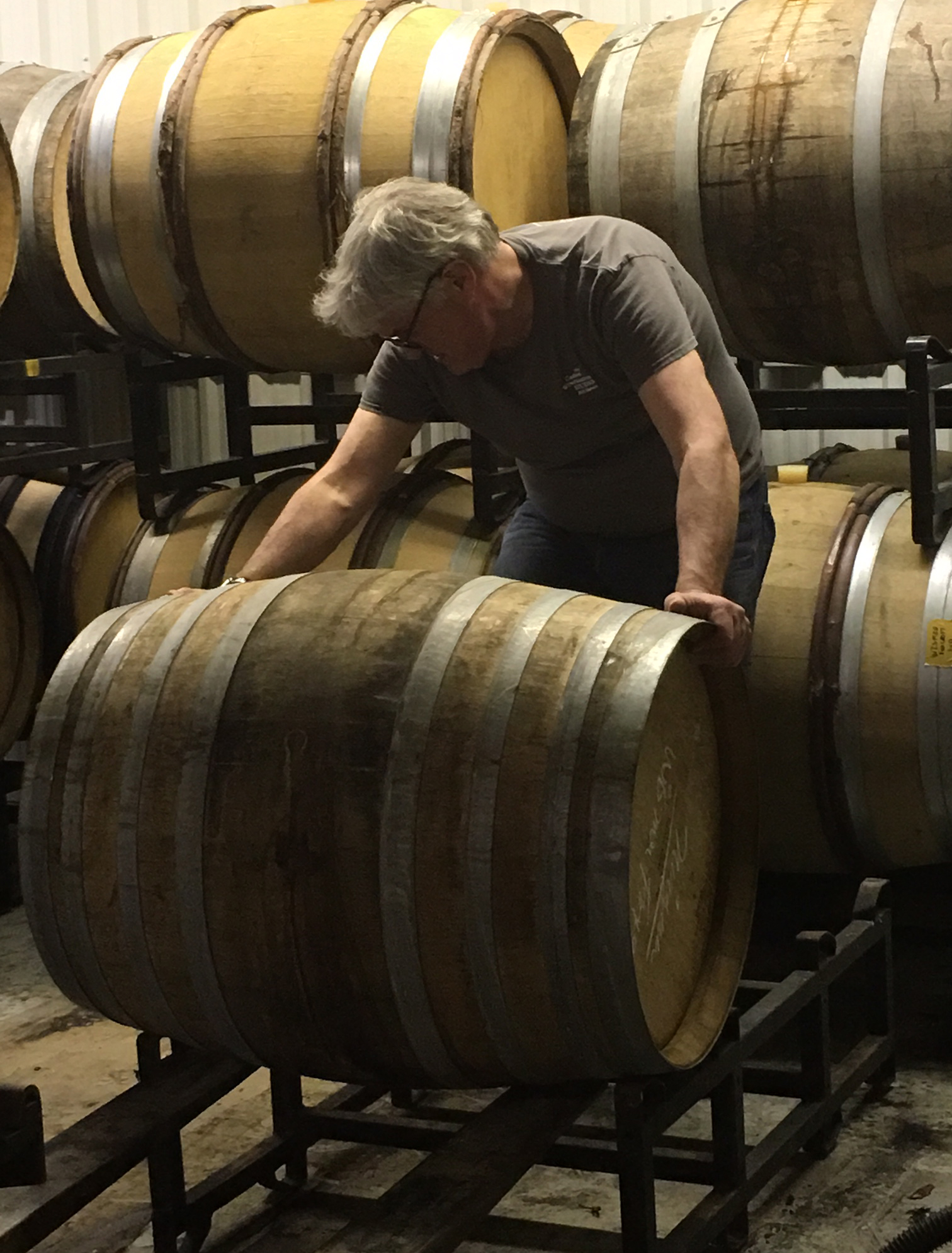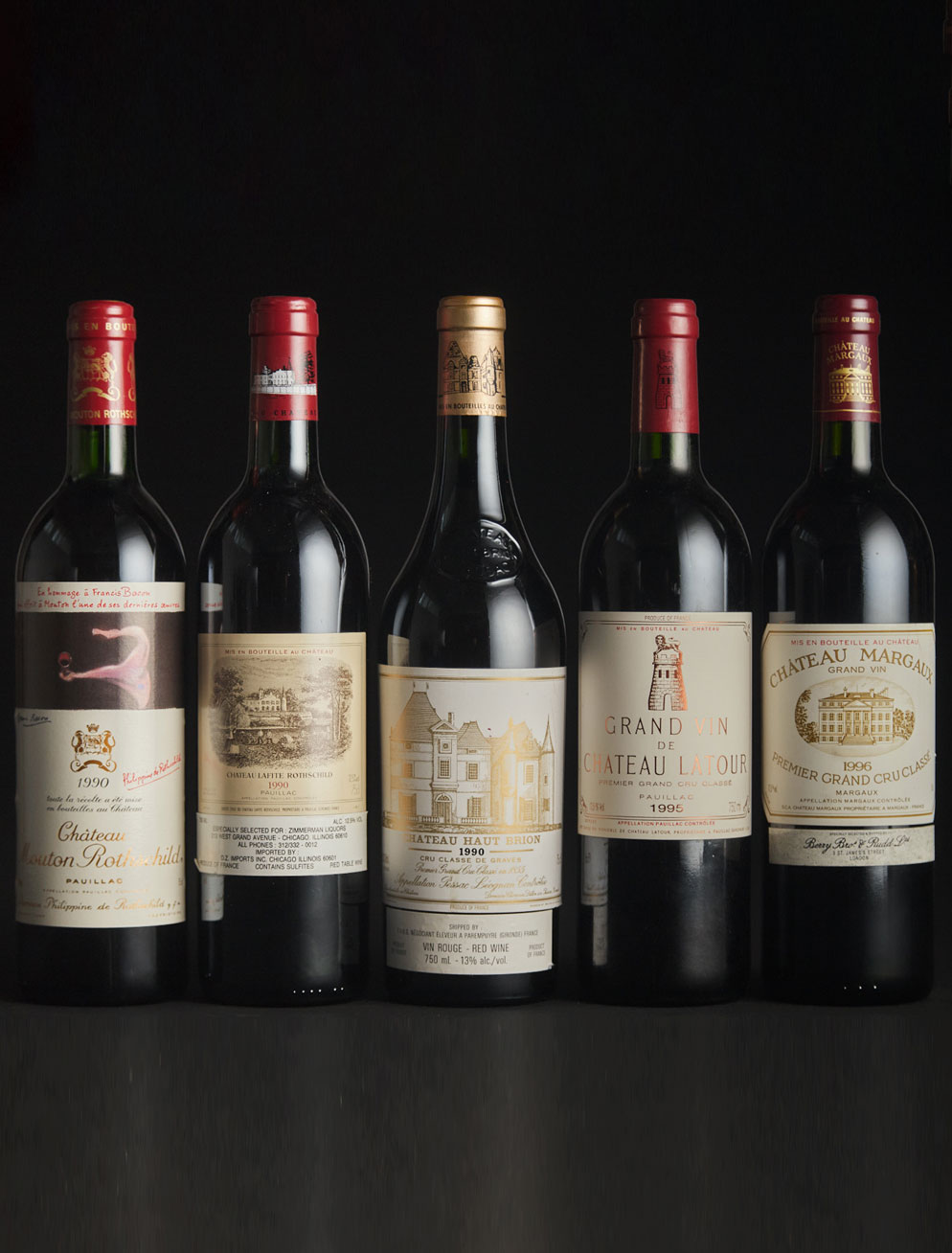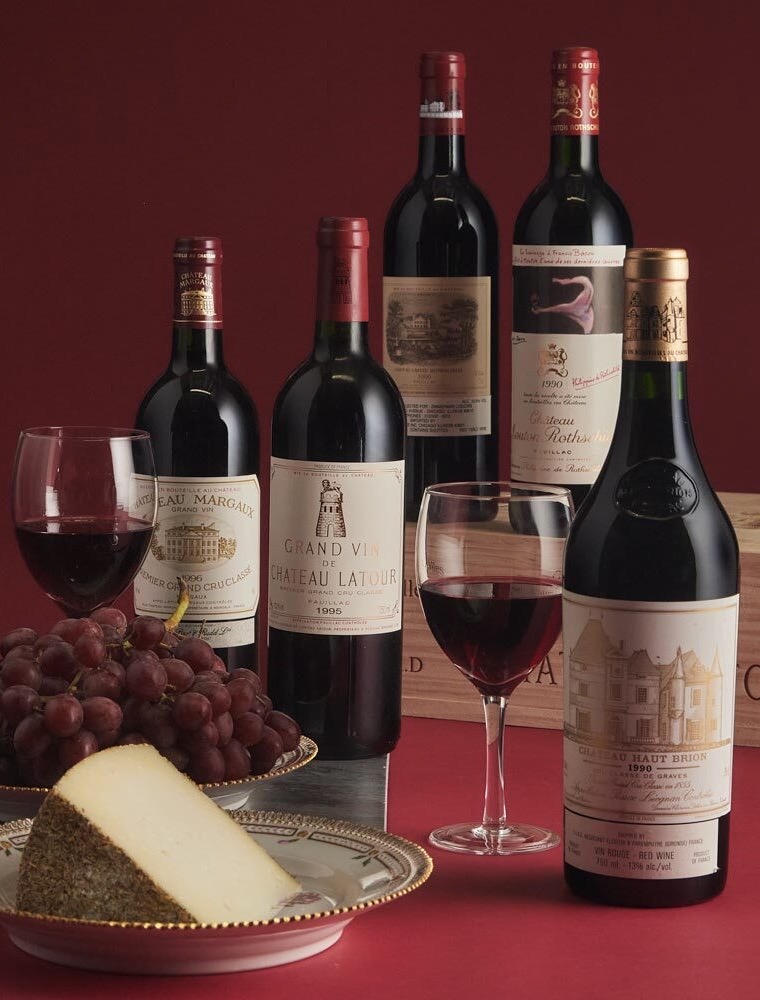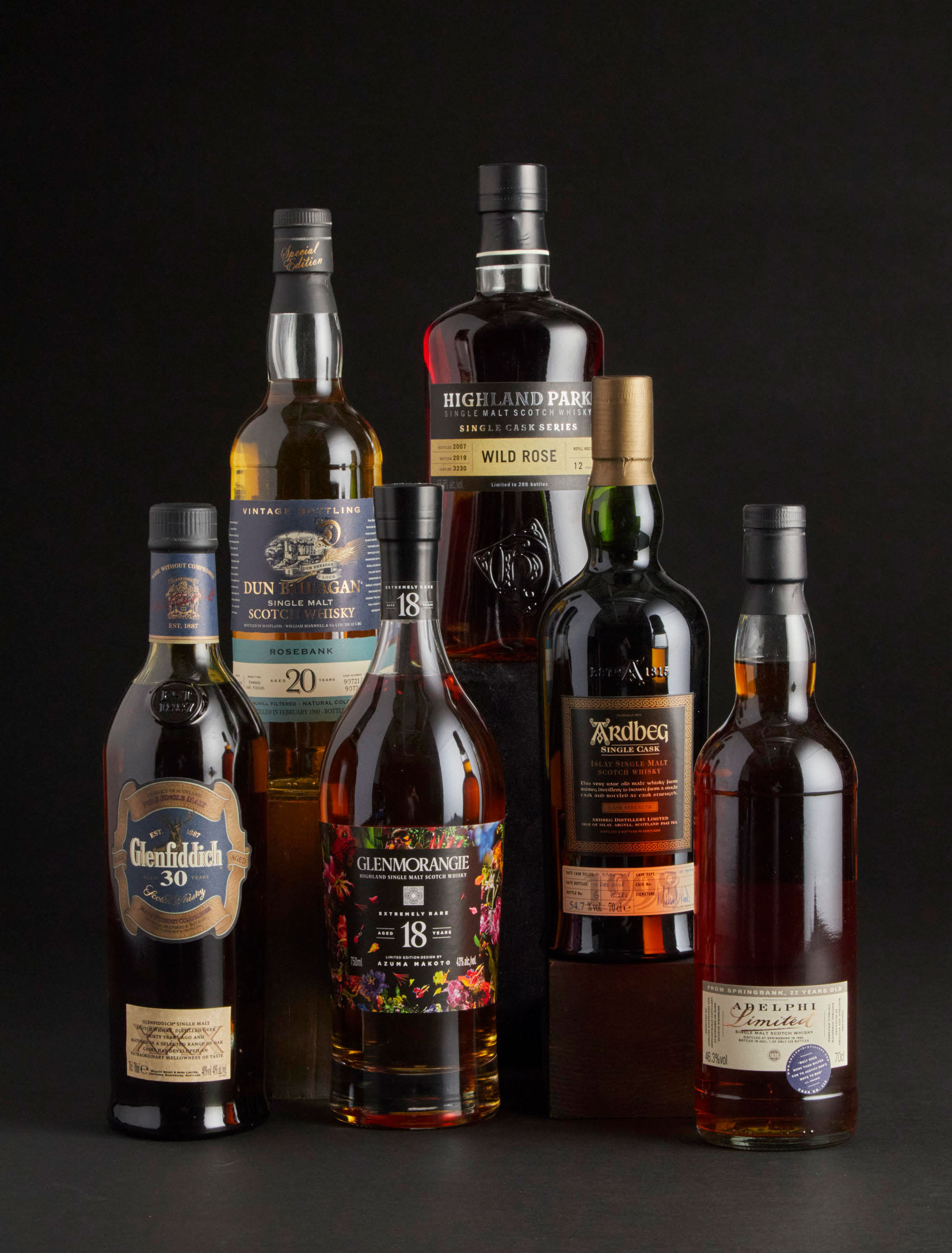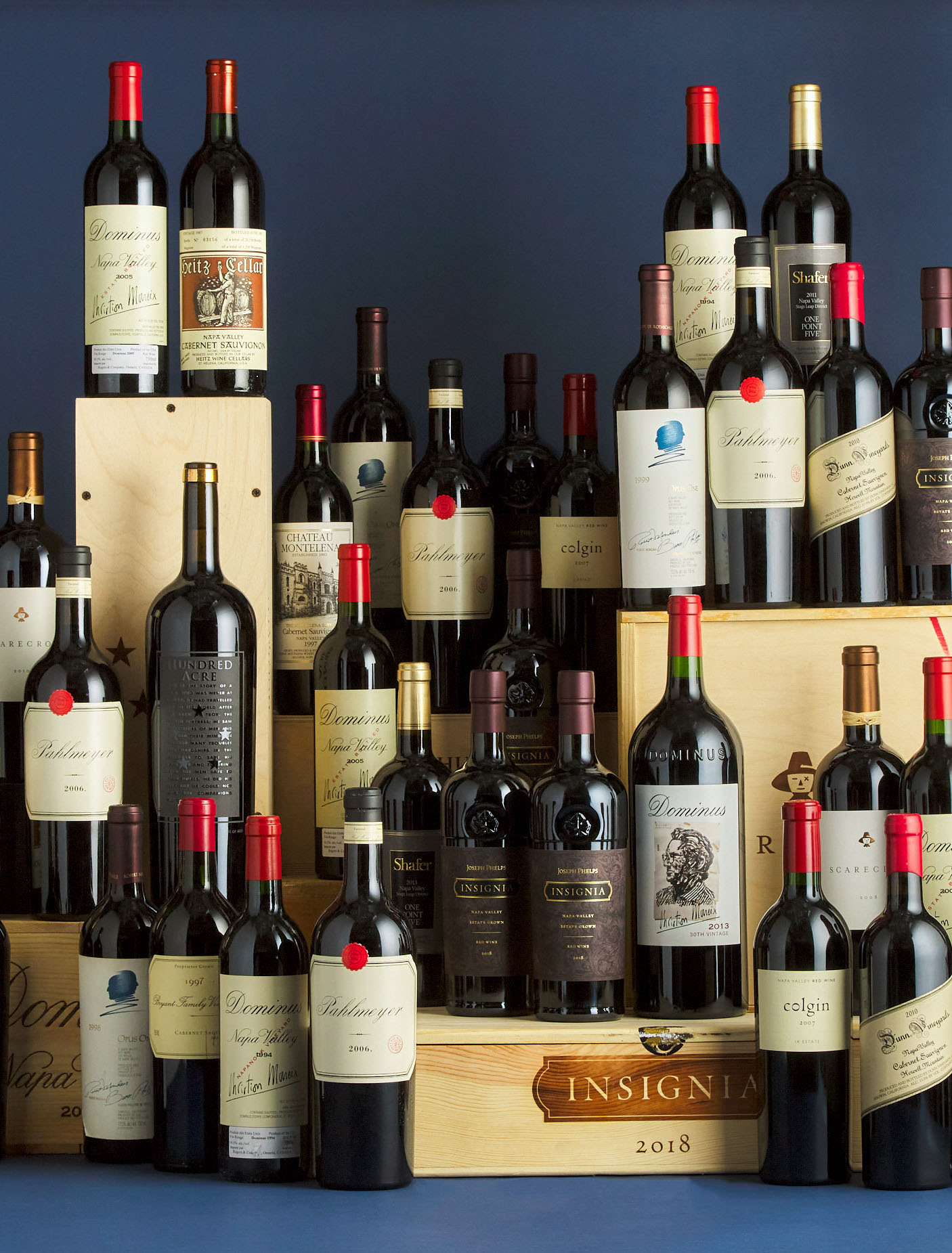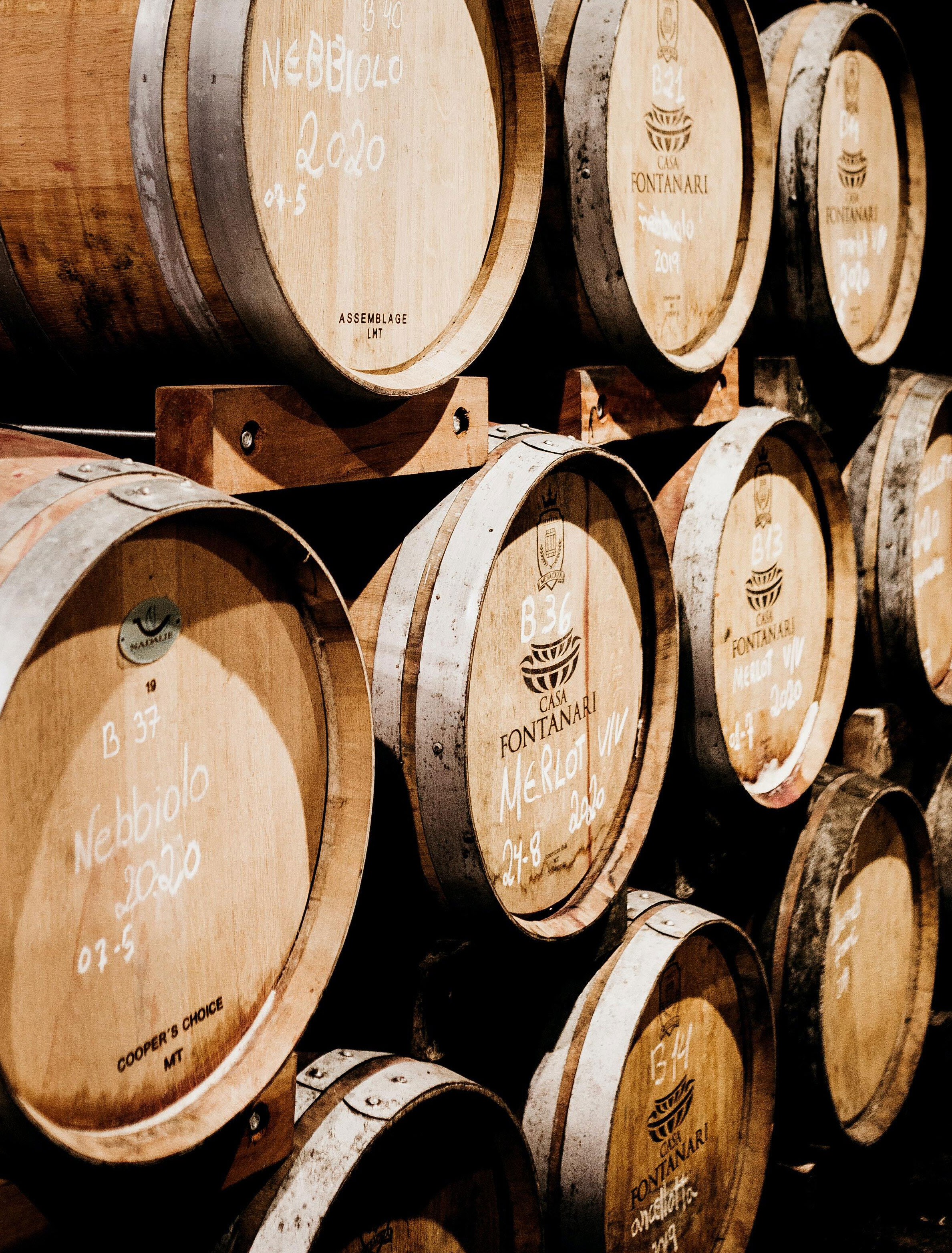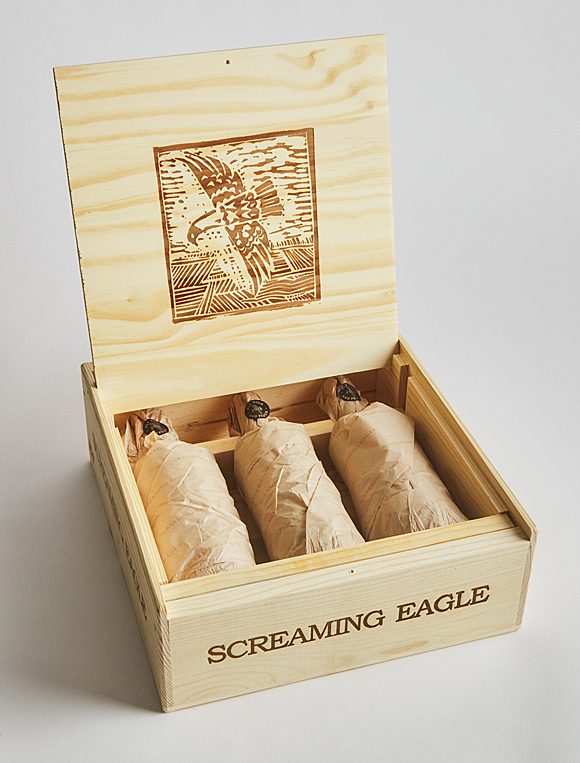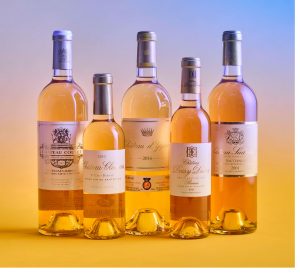
While over 90% of the Bordeaux region’s output is red wine, a few white grapes are dedicated to producing Sauternes (pronounced “so-turn”), a sweet, complex wine which works equally well as an aperitif or after-dinner drink. As our March auction of Fine Wine includes several lots of Sauternes, we took the chance to explore Bordeaux’s “liquid gold” in more detail.
Making Friends With Botrytis
Located 40 km southeast of the city of Bordeaux, Sauternes wine takes its name from a village and sub-region in Graves. Sauternes and its neighbouring commune, Barsac, are located on the banks of the Garonne River and the Ciron tributary. The area is one of the warmest and driest in Bordeaux, foggy in the morning and sunny in the afternoon, perfect for a fungus known as Botrytis cinerea to thrive.
When conditions are right, Botrytis, also referred to as “noble rot,” attacks grapes on the vine, penetrating inside the fruit to dry out the moisture within. Initially, winemakers viewed Botrytis as a blight, and 17th century records indicate that botrytized grape bunches were separated from uninfected bunches. When it was discovered that the fungus has the effect of concentrating and intensifying the sugars and flavours of the grape and could produce a sweet, vibrant wine, the famous sweet Sauternes wine was born. Winemakers initially kept their methods secret from the public, who might not love the idea of drinking “rotten” wine.
Sauternes wine is mostly made from Sémillon grapes, as Sémillion is particularly susceptible to Botrytis due to its thin skin. Sauvignon Blanc and Muscadelle grapes can also be blended into Sauternes, adding acidity and floral characteristics, respectively.
While the Sauternais method seems like a happy accident, Mother Nature does not always cooperate and winemakers must work hard to produce great wine. If the year’s weather is too wet, the grapes cannot dry out properly and will develop grey rot or other diseases which give a sour taste to the wine. Grapes must also be harvested at a very specific point in their maturation, and can both under-rot or over-rot. The progression of the Botrytis fungus on each vine differs, meaning they must be carefully monitored and that the grapes cannot be uniformly harvested at the same time. All of these factors must be perfectly aligned and can often go wrong. Some years there is no release of Sauternes, due to weather which was not perfectly suited for the Botrytis to develop properly. When conditions are right, the Sauternes grapes are harvested before being fermented for 18-36 months, either in oak barrels or stainless steel tanks.
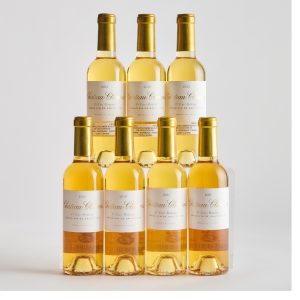
7 hf. bts. per lot $400 – $600
Strictly Classified
Sauternes has one of the smallest regional outputs globally, producing only 480,00 cases per year. This is due in part to the difficulty in producing the wine, as well as the low yield from the desiccated grapes. The result is a coveted product which is among one of the most expensive white wines in the world.
Like the famous red wines of Bordeaux, wines from Sauternes and Barsac are also ranked. Like the list of Grand Crus Classés, the ranking of sweet wines also originated from the 1855 World Expo in Paris. Leading the pack is the famous Chateau d’Yquem, the only Premier Cru Supérieur (Superior First Growth) château. Château d’Yquem is the most expensive Sauternes and holds the record for being the most expensive bottle of white wine sold at auction: a bottle from the 1811 vintage sold for $117,000 USD in 2011. Thomas Jefferson was also a fan of Château d’Yquem, with records of his preference for this sweet wine dating back to 1790, as was George Washington, who ordered cases of the wine to be shipped to America.
After Château d’Yquem, there are 11 First Growths, and 15 Second Growth châteaus in Sauternes and Barsac. Auction records and celebrity drinkers notwithstanding, a good bottle of Sauternes is still relatively accessible, be it at auction or from a wine retailer – another reason to enjoy Bordeaux’s “liquid gold.”
Wines from the region are “AOC” or “Appellation d’Origine Contrôlée,” which means their production is strictly regulated. All wines originating from in the region can be labelled as Sauternes, though wine grown in Barsac can alternately be labelled as Barsac. Barsac wines are known for being fresher and lighter than a classic Sauternes wine and are often available at a lower price point – a bargain for savvy drinkers. Other communes which fall under the Sauternes AOC are Bommes, Fargues, and Preignac.
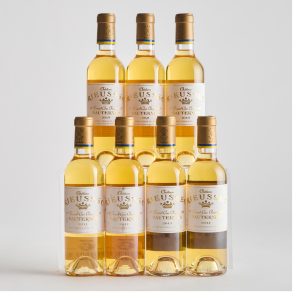
Tasting and Cellaring Notes
Sauternes is known for its almost viscous texture and rich yellow hue. Balancing acidity with sweetness, typical notes include apricot, caramel, butterscotch, honey, almond, tropical fruit, citrus, coconut, marmalade, ginger, honeysuckle and baking spices. Sauternes is a very sweet wine with 120–220 g/L of residual sugar.
Like other wines from Bordeaux, Sauternes has great ageing potential. Stored properly, Sauternes can be cellared anywhere from 5 to 30+ years, depending on the vintage, making it an excellent investment wine. The older the bottle, the darker the hue of the wine within, which mellows into a deep gold colour over decades, echoing the more complex flavours which develop. Yet unlike other blockbusters from Bordeaux, Sauternes is also excellent when consumed young.
How to Serve Sauternes
Best served chilled to around 10°C, you will notice the wine’s complex aromas changing as the wine warms up. The wine can be served in special glassware or in a simple white wine glass.
In Bordeaux, Sauternes is typically enjoyed as an aperitif, though many around the world drink it as a dessert wine. Historically, Sauternes was served with first courses, and remained on the front end of the menu until about 100 years ago when it became seen as an after-dinner treat. One of the reasons for this shift is the warming climate, which has allowed grapes to become sweeter and more potent. Cooler weather in previous centuries meant less residual sugars, which allowed for wider pairing possibilities.
Modern-day Sauternes pairs well with both sweet and salty foods. Classic savoury pairings include blue cheese, foie gras, terrine, poultry, Asian food, or caramelised onions, all of which highlight the sweetness of the wine. Sweet pairings include fruit-themed desserts like tarts or cheesecakes, tiramisu, and ice cream – though beware of pairing the elegant Sauternes with an overly-sweet treat, as too much sugar on the plate will shatter Sauternes’ structure and character. A general rule of thumb is that the wine should be sweeter than the dessert. Super-sugary confections like cake are best dealt with by coffee. Curious about pairing wines with food? We invite you to read our guide.
While Sauternes typically comes in smaller-format bottles like 375 ml, you might not get through a full bottle if you’re serving a smaller party due to the concentration of the nectar within. Luckily, Sauternes keeps slightly longer than your average wine in the refrigerator and can be stored for about five days after opening.
About the auction
Celebrating the beginning of our ninth year of offering outstanding wine in Ontario, our first 2024 auction of Fine Wine showcases over 500 lots. Offering a wide selection of rare and collectible Old and New World wines sought after by wine enthusiasts, collectors and imbibers, many are in original wooden cases with vintages for cellaring and future investments. There is a strong focus on Classified Bordeaux, Australia’s Penfolds, Sauternes, Châteauneuf-du-Pape, outstanding Burgundy and Napa specials.
Please contact us for more information.
Related News
Meet the Specialists

Joann Maplesden
Senior Specialist

Devin Hatfield
Specialist



